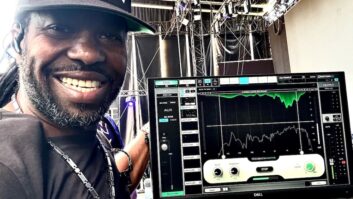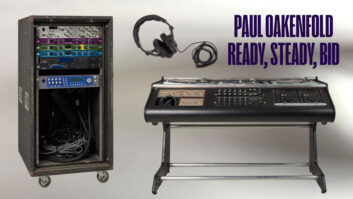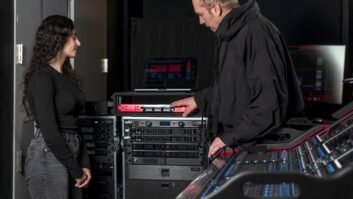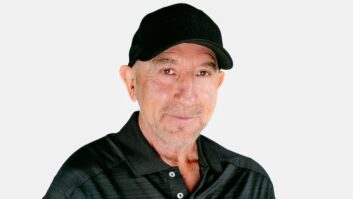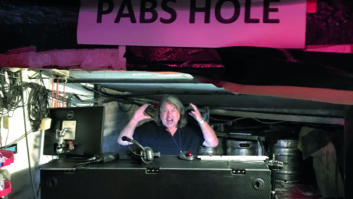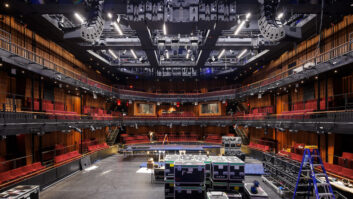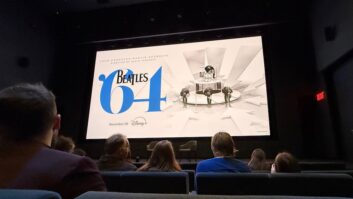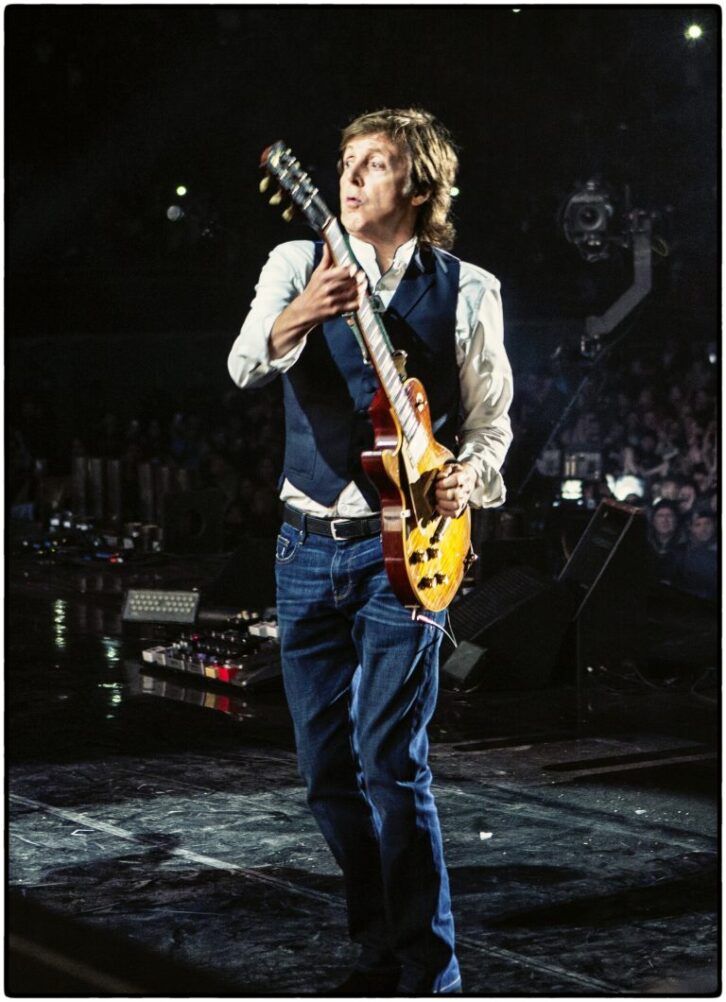
Watching a Paul McCartney concert is a lesson in irony. At their height, the 20-something Beatles played 45-minute sets, but 50-plus years later, at an age when most stars of his era are taking it easy, a Macca show clocks in at three hours. As if to prove the point, Sir Paul did it over and over in September as he tore through eight sold-out shows around New York City, playing two nights a piece at Madison Square Garden; Brooklyn’s Barclays Center; across the Hudson River at Newark, NJ’s Prudential Center; and on Long Island at the newly refurbished NYCB Live Nassau Veterans Memorial Coliseum.
Then again, maybe a three-hour, 38-song set list shouldn’t be surprising: With decades of hits under his belt, the man needs that long just to cover the basic ‘must-plays,’ trot out a few you haven’t heard in a while, and serve up a few surprises, like a recontextualized take on last year’s Kanye West/Rihanna collaboration, “Four Five Seconds,” placing it more firmly in the McCartney oeuvre.
Ensuring that the music rocks every fan at every show is McCartney’s FOH engineer of nearly 30 years, Paul “Pab” Boothroyd, overseeing a system from longtime audio provider Clair Global. While some things have remained constant throughout his tenure—you’d be hard-pressed to find a setlist without a “Hey Jude” sing-along—the technological side has kept apace with the times, so these days, Pab mans two Avid Venue S6L consoles.
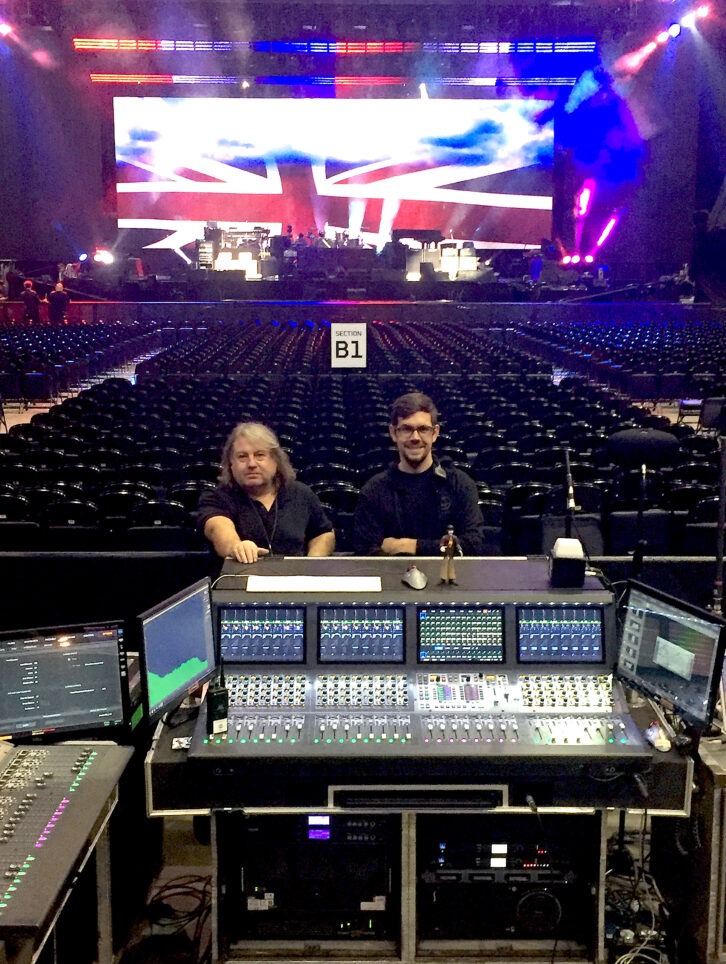
“I’ve been kicking the S6L around for nearly two years now,” he says, speaking in the depths of Nassau Coliseum before the last show of the New York run. “Sonically, it is an improvement on the Profile, and it’s massively more versatile. I adapted to it pretty easily, as it’s a similar layout in certain aspects. I can fly around it in a very basic way, but then I’m a very basic mixer. I don’t get into ‘oh, I’ll press the trigger to do this in the song.’ If people want to get into those functions, it’s all there for them, but me, I just push faders, twiddle a few knobs, shout at the band from back here in frustration and my SE does the rest, eh Andrew?” To which system engineer Andrew Dowling looks up from his tablet, pauses and deadpans, “Front of house is always a team.” Cue laughter.
“I couldn’t agree with that more!” affirms Pab. “We’ve been working together four months now and I think we can both say we’ve liked what we’ve heard, and also it’s great to have a fresh, outside set of ears on this. There’s always different approaches. I constantly look at how other people are doing stuff, techniques, microphones; sound is always an education and that’s what makes it interesting.”
Pab’s transition to the Lab.gruppen-powered Clair Cohesion PA system two years ago was also an education, as he notes, “I was so dialed in on the i-5 that it was a bit of a struggle at first, but I do think the Cohesion CO-12 is about as good as you’re going to get with PA systems that are out there today. Very flexible, very light, very easy to manage. Great delivery, great results, very accurate. Of course, I hate it because it shows all my mistakes off very clearly, but other than that, it’s great.”
But jokes aside, it’s kind of admirable that McCartney’s shows are a place where mistakes could even happen. From the top down, everyone involved is willing to risk the occasional error in order to avoid marching through machine-like shows that are bolted down to tracks, clicks and other safety nets. “There’s no track playback,” confirms Pab. “Yes, the brilliant Wixy [musical director/multi-instrumentalist Paul “Wix” Wickens] is pressing a pedal to make a sound of a tambourine or something, but everything is played live. It’s a band, they’re rocking out together and Paul’s having fun. He’s doing what he loves most, and yes, he’s trying to translate his music to a degree of accuracy, but it’s not absolutely note-perfect; there’s a degree of looseness—it’s real.”
Looseness, however, means being ready for anything, so Pab’s S6L carries dialed-in snapshots for more than 100 songs, regardless of whether they’ve been played every night, once in a blue moon or never outside of rehearsal. When it comes to plug-ins, Pab’s mix goes relatively light, in part because, as he points out, the Beatles didn’t have a lot of gear to work with back in the day. McCartney’s vocal chain is centered around a Sonnox Oxford EQ and Avid Pro compressor. Other plugs that grace the mix regularly include Smack!; ReVibe II; ReVibe I on drums; and Mod Delay III, all used sparingly. “In some of these barns that we play, I don’t have to be washing out the place with even more reverb and delays—there’s enough in the room as it is,” he observes.
Some of that natural reverb gets initiated by the stage sound itself, as things get pretty loud up there. Only Wickens wears in-ear monitors, as the rest of the band opts for Clair R4 sidefills and old-school Showco SRM wedges. Guitarists Rusty Anderson and Brian Ray get captured via Rode NT3 condenser mics. “I like the way they just push the guitar right into the mix,” says Pab. “You’ve got to take it off the center cone a little so it’s not too spiky, but other than that, it’s a cheap mic that’s very good.”
Meanwhile, McCartney’s stage rig is based around Mesa/Boogie and Vox amps for his bass and guitar, respectively. “I kind of go old-school/new-school, with Shure SM57 and KSM32 mics on his lead guitar,” he said. “I blend the two on the console, but it’s also about the recording and Grubby [John “Grubby” Callis, monitor engineer] as well. We track everything, so I like to give the studio a choice. Probably Grubby uses the 57 more than the 32—less chance of feedback.” McCartney’s acoustic guitars are DI’d with an Avalon U5, and while there’s a Beta 58A capturing his vocals all night, halfway down the mic stand is a pair of Beta 98s, set up to capture a special instrument. “It’s a very old ukulele and he doesn’t want us to put any kind of contact on it because it was a gift from George,” says Pab. “The miking makes it a bit clinky-clanky, but there’s also a lot of character.”
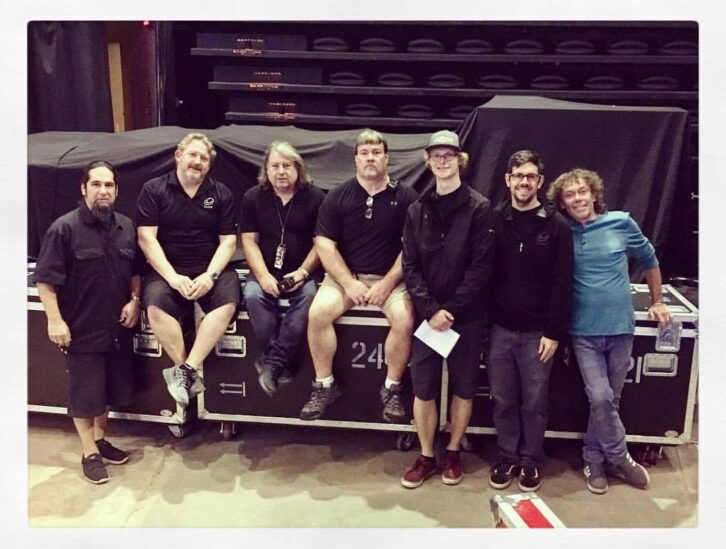
Elsewhere on stage, Abe Laboriel’s elaborate DW drum kit is miked by Audix favorites, with a D6 in the kick, I5s above and below the snare and D4s on the toms, while a right-angled AKG C460 grabs the hi-hat, a Shure SM91 also captures the kick and DPAs are used for underheads. Laboriel contributes backing vocals through a Telefunken M80 on a rotating, telescoping mic stand that takes a lot of abuse: “He’ll use a stick to flick the mic away or in front of his mouth. And he uses a footswitch—not only is he playing away with incredible skill, but he gates his microphone manually so I’m not getting all sorts of noise between lines! Other times we work out between us that he’ll deliberately leave the microphone open because it acts like another overhead and it gives the kit a different flavor of sound.”
One instrument that used to get a little too much flavor was McCartney’s piano. “In the old days, with the Steinway, it was like a big stage overhead mic in a box that gathered the energy, and it sat in the mix like it was going to take off,” says Pab. The solution was to take a left and right from a Kurzweil MicroPiano that is triggered via MIDI from McCartney’s onstage Yamaha piano. The Yamaha itself also sports Helpinstill piano pickups for redundancy and flavoring as needed.
Despite the mountains of gear brought to bear on McCartney’s shows, every night is ultimately about one thing: getting the audience as excited as the guy on stage. “It’s very old-school rock and roll,” says Pab. “It’s loud sidefills and wedges up there, ’cause he likes to rock out. He’s a loud bass player and guitarist, and he likes to scream ‘Helter Skelter’ and ‘Maybe I’m Amazed’ and all that—and he’s still doing it to this day!”
VITAL STATS
Paul McCartney
Clair Global (Lititz, PA)
FOH Engineer: Paul “Pab” Boothroyd
Monitor Engineer: John “Grubby” Callis
Systems Engineer: Andrew Dowling
Monitor Systems Engineer: Paul “Swanny” Swan
Techs: Sean Baca, James Ward, Nathan Sonnenberg, Jen Smola, Kevin Leas, Steve Hupkowicz
FOH Console: (2) Avid Venue S6L 32D
Monitor Console: (2) Midas Heritage 3000, Heritage 3000 extender; Avid Venue S6L 24D
House Speakers: Clair Cohesion CO-12, CP-218, i-3, P-2
Monitor Speakers: Clair SRM, ML-18, R-4 III
Personal Monitors: Shure PSM 600
House Amplifiers: Lab.gruppen
Monitor Amplifiers: Crown
FOH Equipment/Plug-Ins: dbx 160SL; TC Electronic 6000; Plug-Ins: Sonnox Oxford EQ, Avid Pro compressor, Smack!, ReVibe II, ReVibe I, Mod Delay III
Monitor Equipment/Plug-Ins: XTA GQ600b; Drawmer DS201; Yamaha SPX990
Microphones: Shure Axient series with Beta 58A capsule, SM91, Beta 98, KSM32, Beta 58A; Radial J48, PZDI; Audix D6, I5, D4; Telefunken M80; Rode NT3; DPA; Avalon U5

